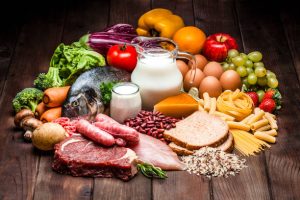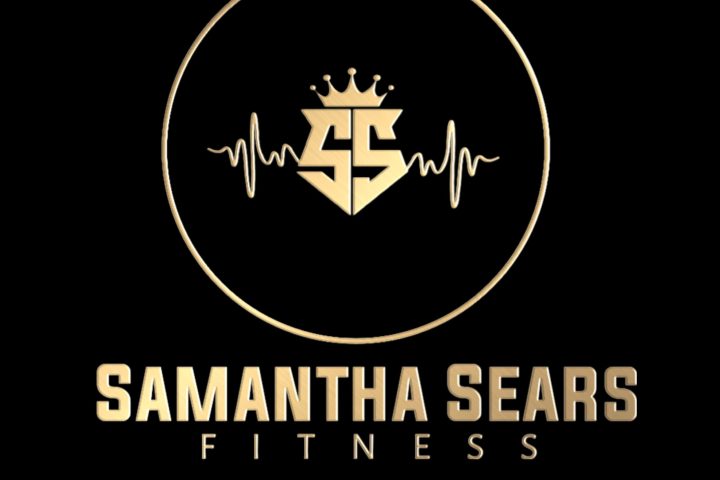
Protein is a macronutrient that is essential to the body’s structure and function. It plays a crucial role in virtually every physiological process, making it a fundamental component of our diets. While carbohydrates and fats also provide energy and support bodily functions, protein is unique in its role in building and repairing tissues, producing enzymes and hormones, and maintaining a healthy immune system. This article will delve into the importance of protein, the reasons we need it, the best dietary sources of protein, and provide recipes for one high-protein breakfast, lunch, and dinner to help you incorporate more of this vital nutrient into your daily diet.
Understanding Protein
Proteins are made up of amino acids, which are organic compounds composed of nitrogen, carbon, hydrogen, and oxygen. There are 20 different amino acids, nine of which are considered essential because the body cannot produce them on its own. These essential amino acids must be obtained from the diet. The other 11 are non-essential, meaning the body can synthesize them.
The Role of Protein in the Body
Protein serves many critical functions in the body:
Muscle Repair and Growth: Protein is crucial for the repair and growth of muscle tissues. This is especially important for athletes and individuals who engage in regular physical activity, as their muscles are constantly undergoing wear and tear.
Enzyme and Hormone Production: Proteins are necessary for the production of enzymes and hormones, which are essential for regulating various bodily functions such as metabolism, growth, and development.
Immune Function: Antibodies, which help fight off infections, are proteins. Adequate protein intake is essential for maintaining a strong and responsive immune system.
Cellular Structure and Function: Proteins are fundamental components of every cell in the body. They contribute to the structural integrity and function of cells, tissues, and organs.
Transport and Storage of Nutrients: Proteins help transport nutrients throughout the body. For example, hemoglobin is a protein that carries oxygen in the blood, and ferritin is a protein that stores iron.
Satiety and Weight Management: High-protein foods can help you feel fuller for longer periods, reducing overall calorie intake and aiding in weight management.
Daily Protein Requirements
The Recommended Dietary Allowance (RDA) for protein varies based on age, sex, and level of physical activity. For most adults, the RDA is 0.8 grams of protein per kilogram of body weight. However, athletes and individuals with higher physical activity levels may require 1.2 to 2.0 grams per kilogram of body weight to support muscle repair and growth.
High-Quality Protein Sources
Not all protein sources are created equal. High-quality proteins, also known as complete proteins, contain all nine essential amino acids in adequate amounts. These are typically found in animal-based foods. Incomplete proteins, found in plant-based foods, lack one or more essential amino acids. However, by combining different plant-based protein sources, one can obtain all the essential amino acids.
Animal-Based Protein Sources
Meat: Beef, pork, lamb, and poultry are excellent sources of complete protein.
Fish and Seafood: Salmon, tuna, cod, shrimp, and other seafood provide high-quality protein and healthy fats.
Dairy: Milk, cheese, yogurt, and other dairy products are rich in protein and calcium.
Eggs: Eggs are a versatile and complete protein source.
Plant-Based Protein Sources
Legumes: Beans, lentils, chickpeas, and peas are good sources of protein and fiber.
Nuts and Seeds: Almonds, walnuts, chia seeds, and flaxseeds provide protein and healthy fats.
Whole Grains: Quinoa, farro, and bulgur contain protein and essential nutrients.
Soy Products: Tofu, tempeh, and edamame are high in protein and can be used in various dishes.
The Impact of Protein on Health
Muscle Health
Protein is essential for muscle health. It helps repair and build muscle tissues, making it crucial for athletes and individuals who engage in regular physical activity. Consuming adequate protein can help prevent muscle loss, particularly in older adults. Sarcopenia, the age-related loss of muscle mass and strength, can be mitigated with sufficient protein intake and resistance exercise.
Weight Management
Protein is known for its ability to promote satiety, which can help with weight management. High-protein diets can reduce hunger and increase feelings of fullness, leading to a lower overall calorie intake. Additionally, protein has a higher thermic effect of food (TEF) compared to carbohydrates and fats, meaning the body uses more energy to digest protein, further supporting weight management efforts.
Bone Health
Protein plays a significant role in maintaining bone health. It helps form the structural matrix of bones and supports the production of collagen, which provides strength and flexibility. Adequate protein intake is associated with a lower risk of fractures and osteoporosis, especially in older adults.
Cardiovascular Health
The relationship between protein intake and cardiovascular health is complex. Some high-protein diets, particularly those high in animal proteins, have been associated with increased cholesterol levels. However, replacing some animal proteins with plant-based proteins can improve cardiovascular health by reducing cholesterol levels and lowering the risk of heart disease.
Metabolic Health
Protein is essential for maintaining metabolic health. It supports the body’s metabolic rate and helps regulate blood sugar levels. High-protein diets have been shown to improve insulin sensitivity and reduce the risk of type 2 diabetes.
High-Protein Recipes
Incorporating high-protein meals into your diet can help you meet your daily protein needs and support overall health. Here are one breakfast, lunch, and dinner recipe, each rich in protein.
Breakfast: Greek Yogurt Parfait with Berries and Nuts
Ingredients:
1 cup Greek yogurt (approximately 20 grams of protein)
1/2 cup mixed berries (strawberries, blueberries, raspberries)
2 tablespoons mixed nuts (almonds, walnuts, pecans)
1 tablespoon chia seeds
1 teaspoon honey (optional)
Instructions:
In a bowl or glass, layer the Greek yogurt at the bottom.
Add a layer of mixed berries on top of the yogurt.
Sprinkle mixed nuts and chia seeds over the berries.
Drizzle with honey if desired.
Serve immediately for a nutritious and protein-packed breakfast.
Nutritional Information:
Protein: 24 grams
Calories: 300
Fat: 15 grams
Carbohydrates: 25 grams
Fiber: 7 grams
Lunch: Grilled Chicken Salad with Quinoa
Ingredients:
1 cup cooked quinoa (approximately 8 grams of protein)
1 grilled chicken breast, sliced (approximately 26 grams of protein)
2 cups mixed greens (spinach, arugula, kale)
1/2 cup cherry tomatoes, halved
1/4 cup feta cheese, crumbled
1/4 cup chickpeas (optional for extra protein)
2 tablespoons olive oil
1 tablespoon balsamic vinegar
Salt and pepper to taste
Instructions:
Cook quinoa according to package instructions and let it cool.
Grill the chicken breast until fully cooked, then slice it thinly.
In a large bowl, combine the mixed greens, cherry tomatoes, feta cheese, and chickpeas if using.
Add the quinoa and sliced chicken to the salad.
Drizzle with olive oil and balsamic vinegar, and season with salt and pepper.
Toss gently to combine and serve.
Nutritional Information:
Protein: 34 grams
Calories: 450
Fat: 20 grams
Carbohydrates: 30 grams
Fiber: 8 grams
Dinner: Baked Salmon with Lentils and Vegetables
Ingredients:
2 salmon fillets (approximately 42 grams of protein for two fillets)
1 cup cooked green or brown lentils (approximately 18 grams of protein)
1 cup broccoli florets
1 cup baby carrots
2 tablespoons olive oil
1 lemon, sliced
2 cloves garlic, minced
Salt and pepper to taste
Fresh dill for garnish (optional)
Instructions:
Preheat the oven to 400°F (200°C).
Place the salmon fillets on a baking sheet lined with parchment paper. Drizzle with 1 tablespoon of olive oil, and season with salt, pepper, and minced garlic. Top with lemon slices.
Arrange the broccoli and baby carrots around the salmon on the baking sheet. Drizzle the vegetables with the remaining olive oil and season with salt and pepper.
Bake for 15-20 minutes or until the salmon is cooked through and flakes easily with a fork.
While the salmon and vegetables are baking, cook the lentils according to package instructions.
Serve the baked salmon and vegetables over a bed of lentils, garnished with fresh dill if desired.
Nutritional Information:
Protein: 44 grams
Calories: 600
Fat: 28 grams
Carbohydrates: 40 grams
Fiber: 12 grams
Protein is an essential nutrient that plays a vital role in the body’s overall health and functionality. It is necessary for muscle repair and growth, enzyme and hormone production, immune function, and maintaining cellular structure and function. Adequate protein intake is also crucial for weight management, bone health, cardiovascular health, and metabolic health.
Incorporating high-quality protein sources into your diet, such as lean meats, fish, dairy, legumes, nuts, seeds, and whole grains, can help you meet your daily protein needs. The provided high-protein recipes for breakfast, lunch, and dinner can help you get started on a protein-rich diet that supports your health and well-being.
By understanding the importance of protein and making conscious dietary choices, you can ensure that you are providing your body with the essential nutrients it needs to thrive.
